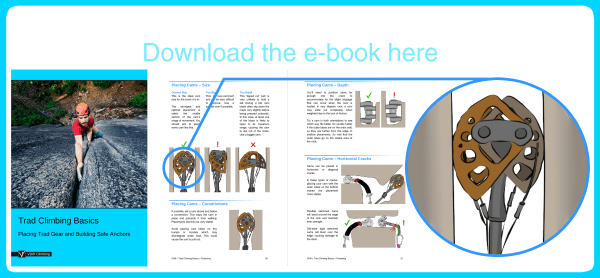This 'Trad Anchor' article is part of the book - Trad Climbing Basics.

You'll need to attach yourself to the anchor in a way that you can see your partner as they follow the pitch and brace yourself if they fall.
Make sure you are positioned in a straight line between the anchor and the climber. You shouldn’t be pulled sideways if the climber falls. You may need to extend your anchor to get into the optimal belay position. There are many ways to do this, each with their own advantages and limitations.
Some of the most common methods are described below. With practise, you should develop the ability to adapt and combine these methods to suit every belay situation.
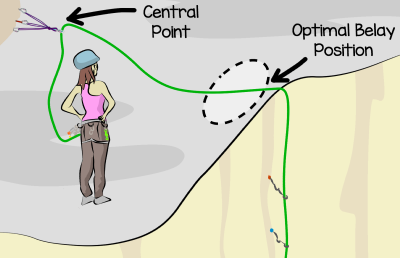
Method 1: Clip Directly
Clip your belay loop into the central point directly with a screwgate carabiner.
Advantages
- Simple
Disadvantages
- No dynamic aspect to the anchor (using the rope is much better. See methods 2-5 below)
- Very difficult to adjust belay position
Best Situation to Use This Method
If extending the anchor with the rope would put you in a bad position to belay.
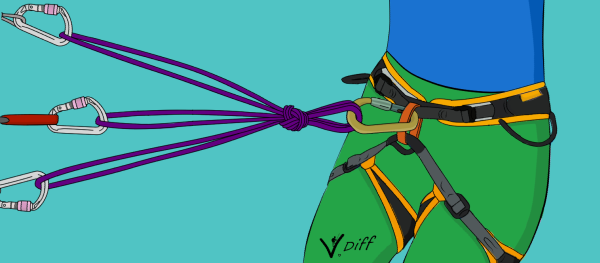
Method 2: Tie to the Central Point
Tie your rope to the central point using a clovehitch. Then fine-tune your belay position by adjusting the clovehitch; just shuffle rope through and pull it tight. The rope between you and the central point will need to be fairly tight.
Advantages
- Only uses a small amount of rope
Disadvantages
- Belay position must be close to the central point
Best Situation to Use This Method
If the central point is within reasonable reach of your belay position (up to 2 meters or so).
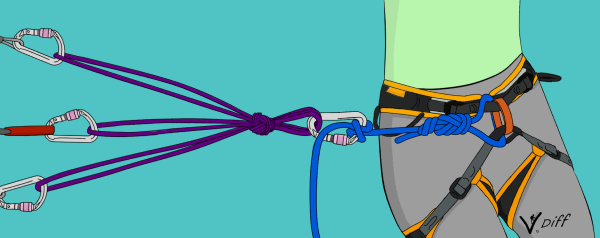
Method 3: Loop Through the Central Point
Clip the rope through the screwgate on the central point, then walk to your belay position. Attach a screwgate to your rope loop and then clovehitch the rope to it.
Advantages
- You can fine-tune your belay position without moving back to the anchor.
Disadvantages
- Uses more rope and one extra screwgate than method 2
Best Situation to Use This Method
If the central point is out of reach from your belay position.
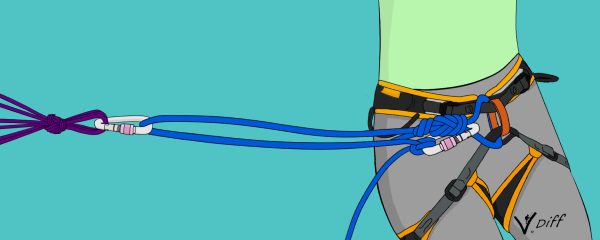
Method 4: Attaching to Two Points
Attach the rope to the nearest anchor point with a clovehitch. Then clovehitch the rope to the other anchor point, leaving a little slack between the two. Next, clovehitch the rope to your rope loop with another screwgate.
Advantages
- Equalizes two points
- Uses less rope than method 5
Disadvantages
- Must be close to the first anchor point in order to fine-tune your belay position.
- The central point is created at your belay loop. This means that you must belay directly from your harness (you can't use guide mode).
Best Situation to Use This Method
If you have two anchor points which are too far apart to equalize with a sling/cordelette.
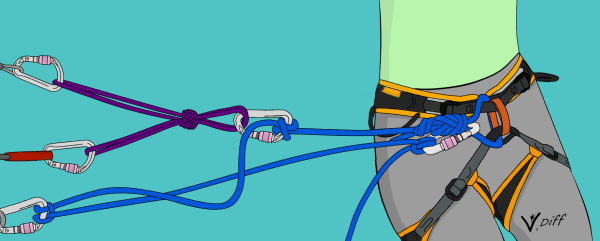
Method 5: Attaching to Three or More Points
Step 1
Clip the rope through the furthest away point, then walk to your belay position. Attach a screwgate to your rope loop and then clovehitch the rope to it, just the same as method 3.
Step 2
Repeat this step with the second point.
Step 3
Tie your rope to the third point using a clovehitch, as described in method 2.
You can fine-tune the clovehitches to equalize the three points. This is a good method if you arrive at a belay with no slings or cordelette.
Advantages
- You can use this method to equalize as many points as you need. Just keep repeating step 1 until you've equalized all your pieces.
Disadvantages
- Uses up a lot of rope.
- You must belay directly from your harness.
Best Situation to Use This Method
If you arrive at a belay with no slings or cordelette.
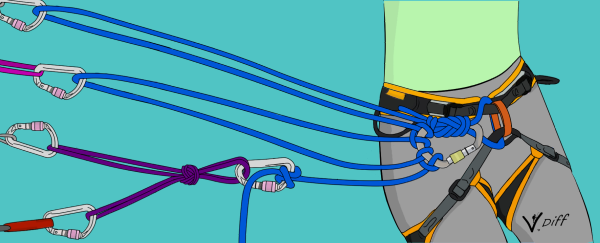
Tree Anchors
Walking around a large tree and clipping the rope back to your rope loop is a quick way to make an anchor with only one screwgate carabiner. The clovehitch or figure-8 on a bight are good knots to use. It is only suitable to do this with very large trees. Watch out for tree sap.
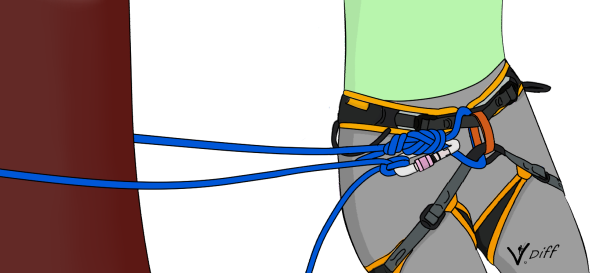
Attaching to a Trad Anchor with Half Ropes
When climbing with half ropes, you can use any of the previously described methods with either one or both ropes.
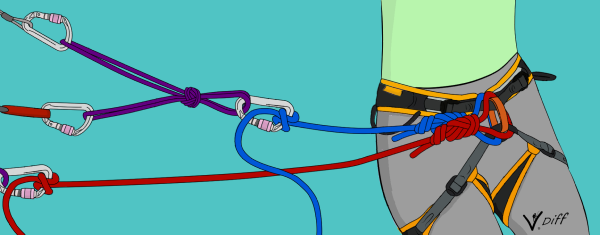
Attaching to a Trad Anchor with a Sling
Slings are designed to be used with a dynamic rope in the system to lessen the impact on them. It's only safe to attach yourself to an anchor with a sling if you won't be moving above it (such as when setting up an abseil).
If you fall when above an anchor (even if you are only a foot above), unusually large forces will be generated.
You can damage internal organs with just a 10kN force - falling onto a sling directly is likely to be much higher than this. It could also break the sling, or the anchor.
If there is any chance that you will move sideways or above the anchor, make sure to attach to it with the rope.
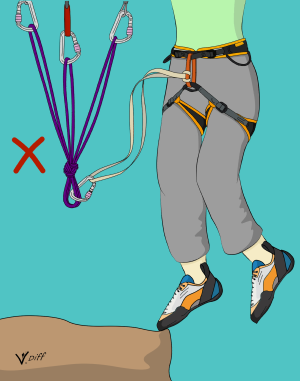
Trad Anchor Checklist
You can use any of the previously described methods in any combination with either a single rope or half ropes. Whichever you choose, make sure:
1) Enough pieces of gear to satisfy 'the 6 point rule'
2) Each piece is placed as well as it can be
3) The rock around the gear is solid
4) The pieces of gear are equalized correctly
5) The V-angle is less than 60 degrees at each point of equalization
6) The anchor is perfectly aligned with the direction that the pull will come from
7) Each piece is independent from the others to prevent shock loading
8) You are attached to the anchor with a tight rope
9)All knots are tied neatly
10) All the screwgates are fastened up.
Once you can answer 'yes' to all of these, you can tell your partner that you are 'safe' or 'off belay'.
